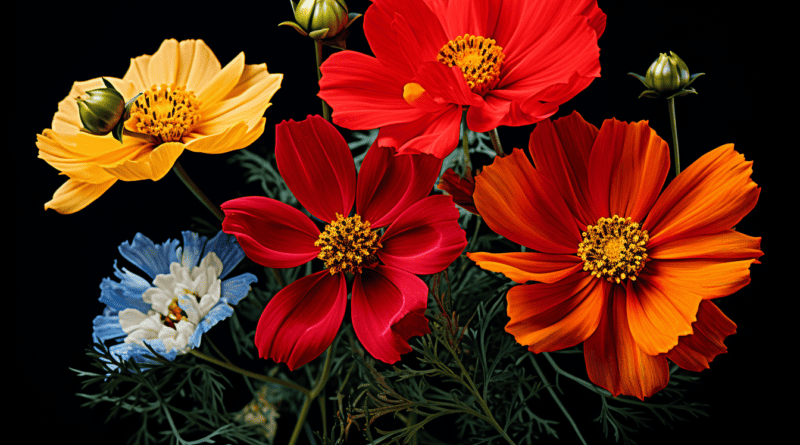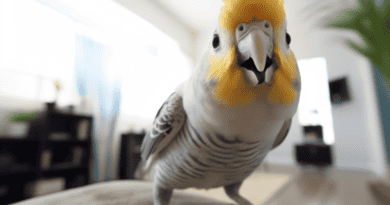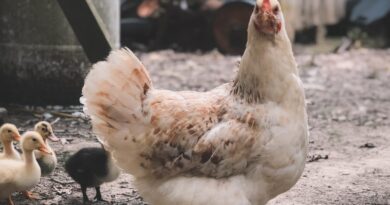Year After Year: The Annual Flowers That Keep Coming Back – Perennial Magic
Gardening is a beloved hobby for many, and for good reason. It is a peaceful, meditative activity that connects us to the earth and brings beauty into our lives. Many gardeners, both novice and experienced, often find themselves confused about the different categories of flowers. One common misconception is that annual flowers are those that bloom only once and then never again. However, this is not entirely true. In this post, we will delve deep into the world of annual flowers that come back every year, dispelling common myths and providing a comprehensive guide to these perennial wonders.
Understanding the Terminology
Before we dive into the specifics, it is important to clarify some commonly confused terms:
- Annuals: These are plants that complete their entire life cycle – from germination to seed production – in a single growing season. After this, the plant dies. However, some annuals can reseed themselves, essentially giving birth to new plants the following year.
- Perennials: These are plants that live for more than two years. They may not flower in their first year, but once they start, they will typically flower every year thereafter.
- Biennials: These plants take two years to complete their life cycle. They typically produce leaves in the first year and flowers in the second year.
It is worth noting that a plant that is perennial in one region may be considered annual in another, depending on the local climate.
The Magic of Self-Seeding Annuals
While true annuals only live for one season, there is a special category of annuals that can come back year after year: self-seeding annuals. These plants produce seeds that fall to the ground and germinate the following spring, creating a new generation of plants. This can give the appearance of the same plant coming back year after year, even though it is technically a new plant each time.
Popular Self-Seeding Annuals
Here are some popular self-seeding annuals that can bring perennial magic to your garden:
- Poppies (Papaver spp.): As previously mentioned, poppies are known for their bright, showy blossoms and delicate, papery petals. There are various species of poppies, and while there are perennial varieties, many are actually self-seeding annuals. Once established, they can come back year after year, filling your garden with their vibrant beauty.
- Marigolds (Tagetes spp.): Marigolds, another previously mentioned flower, are a popular choice for gardeners due to their bright, cheerful colors and pest-repelling properties. While they are technically annuals, marigolds are prolific seed producers and often come back the following year.
- Cosmos (Cosmos bipinnatus): These daisy-like flowers are loved for their feathery foliage and delicate, fluttery petals. They are easy to grow and often reseed themselves, coming back year after year.
- Nasturtiums (Tropaeolum majus): These vibrant flowers are not only beautiful but also edible, adding a peppery kick to salads. Nasturtiums are vigorous growers and prolific seed producers, often coming back year after year.
- Sunflowers (Helianthus annuus): Sunflowers are iconic for their tall stems and large, sunny faces. While they are technically annuals, sunflowers can reseed themselves and come back the following year, often in surprising places.
- Calendula (Calendula officinalis): Also known as pot marigold, calendula produces bright orange or yellow flowers that are edible and have medicinal properties. Calendula is a prolific self-seeder and often comes back year after year.
- Morning Glory (Ipomoea purpurea): These climbing vines produce beautiful, trumpet-shaped flowers that open in the morning and close in the afternoon. Morning glories produce a lot of seeds and can come back year after year, sometimes even becoming invasive.
Tips for Encouraging Self-Seeding
While self-seeding annuals have the potential to come back year after year, there are a few tips that can help encourage this process:
- Leave the Flowers: Resist the urge to deadhead spent flowers. Leaving the flowers on the plant will allow them to produce seeds and drop them to the ground.
- Don’t Over-Mulch: A thick layer of mulch can prevent seeds from making contact with the soil and germinating. Use a light layer of mulch or none at all.
- Avoid Over-Cleaning: While it is important to remove dead or diseased plant material, avoid being too tidy. Leaving some plant debris on the ground can provide a place for seeds to nestle in and germinate.
Flowers from Bulbs: Daffodils, Tulips and More
While self-seeding annuals can bring perennial magic to your garden, there is another category of plants that can provide stunning blooms year after year: bulbous plants. Bulbous plants, such as daffodils and tulips, store energy in an underground bulb or corm, which allows them to survive through winter and regrow in the spring.
Daffodils (Narcissus spp.)
Daffodils are a beloved spring-blooming flower known for their bright yellow blossoms and sweet fragrance. They are perennial plants, meaning they come back year after year, and are grown from bulbs.
- Planting: Daffodil bulbs should be planted in the fall, about 2-4 weeks before the ground freezes. Plant the bulbs about 3-6 inches deep and 6-9 inches apart, with the pointy end facing up.
- Care: Daffodils require minimal care. Water them well after planting and then regularly during their growing season. Once the flowers have faded, it is important to leave the foliage until it turns yellow and dies back. This allows the plant to store energy for the next year.
- Propagation: Over time, daffodil bulbs can multiply underground, leading to crowded clumps of flowers. It is a good idea to divide the bulbs every 3-5 years to maintain healthy, vigorous growth.
Tulips (Tulipa spp.)
Tulips are another popular spring-blooming flower, known for their wide range of colors and elegant, cup-shaped blossoms. Like daffodils, tulips are perennial plants grown from bulbs.
- Planting: Tulip bulbs should be planted in the fall, about 6-8 weeks before the ground freezes. Plant the bulbs about 8 inches deep and 4-6 inches apart, with the pointy end facing up.
- Care: Tulips require minimal care. Water them well after planting and then regularly during their growing season. Unlike daffodils, tulip foliage can be removed once the flowers have faded.
- Propagation: Tulip bulbs can also multiply underground, leading to crowded clumps of flowers. It is a good idea to divide the bulbs every 3-5 years to maintain healthy, vigorous growth.
Other Bulbous Flowers
In addition to daffodils and tulips, there are many other bulbous flowers that can bring beauty to your garden year after year:
- Hyacinths (Hyacinthus spp.): These fragrant flowers produce dense spikes of blossoms in a range of colors, from white to pink to blue.
- Crocuses (Crocus spp.): These early spring-blooming flowers produce delicate, cup-shaped blossoms in a range of colors, including white, yellow, purple, and striped.
- Lilies (Lilium spp.): Lilies produce large, showy blossoms in a range of colors, from white to pink to orange to red.
Conclusion
While true annuals only live for one season, self-seeding annuals can bring perennial magic to your garden by coming back year after year. By understanding the differences between annuals, perennials, and biennials, and by following a few simple tips, you can enjoy the beauty of these plants for many seasons to come. Happy gardening!

This article is written by…
Ramit Singh Rence
Ramit is a self-taught expert on building and renovation. He’s really a preschool teacher by trade but has changed lanes of teaching. He lives on a huge homestead where he, together with his wife Marie, runs summer and winter camps for kids with social challenges and learning disabilities.



